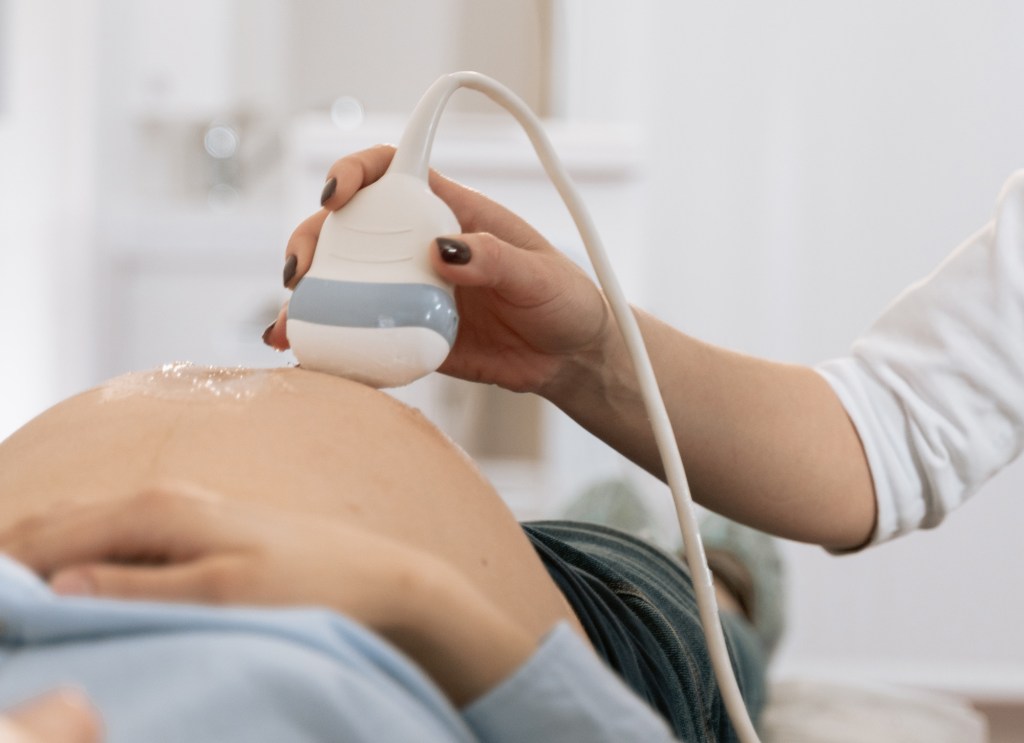Your cart is currently empty!
What is Preeclampsia?

What do Kim K, Beyonce, Mariah Carey, and Adriana Lima all have in common? They had preeclampsia. Preeclampsia is a condition that only occurs during pregnancy, in which the expectant mother’s blood pressure increases significantly around or after the 20th week of gestation. It can affect up to 8% of births nationwide.
What is Preeclampsia?
Preeclampsia is a condition that can develop over time. Experts aren’t sure of the exact cause yet, but most information shows that it is associated with the formation of the placenta and if it implanted properly onto the uterine wall. A woman and her baby can be perfectly healthy, and still have a diagnosis suddenly appear.

What are the symptoms?
Symptoms can include…
- Very elevated blood pressure (140/90 or above)
- Protein in urine
- Severe swelling in hands, feet, and face
- Persistent headaches
- Blurry vision and dizziness
- Nausea/Vomiting
- Fatigue
- Shortness of breath
- Stomach pain, specifically in the upper right portion (this may feel like heartburn)
- Sudden atypical weight gain
Symptoms can start out as mild swelling and elevated blood pressure then increase into severe headaches, blurred vision, vomiting, and shortness of breath.
Some symptoms, such as fatigue, shortness of breath, and swelling, may seem normal during pregnancy, but they may indicate an underlying issue. If you experience any of these symptoms, call your doctor and let your OBGYN know during your checkups.
Preeclampsia can affect any pregnant individual. Those who are at a higher risk of developing it include women with:
- A history of high blood pressure
- Obesity
- Diabetes
- First pregnancy
- Preeclampsia in a prior pregnancy
- Multiples (twins or triplets)
- Over age 40
- Under age 20
- History of kidney disease
- Family history of preeclampsia
- Autoimmune conditions such as Rheumatoid Arthritis
Preeclampsia is a serious condition, and the severity can vary between cases. It can lead to HELLP syndrome or Eclampsia.

HELLP Syndrome
HELLP syndrome is when the liver, red blood cells, and blood clotting systems are not working properly. HELLP stands for Hemolysis (damaged red blood cells), Elevated Liver Enzymes (liver cell damage), and Low Platelet Count (the cells that help blood clot). 10% of preeclampsia cases can develop into this syndrome.

Eclampsia
Those who have severe preeclampsia can develop seizures. Seizures are sudden, uncontrolled disturbances in the brain that can affect movement or behavior. These seizures can occur during pregnancy or shortly after giving birth.
Patients with eclampsia can also have HELLP syndrome. If this is the case, magnesium will be administered to prevent seizures.
It is vital to receive timely care to avoid serious complications with preeclampsia, HELLP syndrome, and eclampsia. Make sure to talk to your healthcare provider about any symptoms that occur.

Treatment
Preeclampsia can only be cured by delivering your baby and placenta. When diagnosed, your OBYGN will want to deliver the baby as quickly as possible. However, if you are not near your due date, treatment includes:
- Rest or bed rest
- More prenatal visits
- Blood pressure medication
If you are at high risk of developing preeclampsia, your provider may suggest a low dose aspirin as soon as 12 weeks of pregnancy as a preventative measure. But do not self diagnose, speak to your doctor about any concerns or symptoms.
If you are near your due date, your provider may determine that it is best for you and your baby to induce birth earlier than expected. Induction techniques can include Pitocin, cesarean section, or intravenous magnesium.

How dangerous is preeclampsia?
All of the above conditions are life threatening, which is why it is crucial to talk to your provider about any symptoms you are experiencing. It is important to be closely monitored if you have preeclampsia. It can affect the mother by causing liver failure, renal failure, seizures, or long term cardiovascular dysfunction. The baby can also lack food and oxygen, leading to growth restrictions and needing to be born prematurely.

What now?
While all this sounds scary, with proper care, most women fully recover and deliver healthy babies. As long as the expectant mother attends all her prenatal visits and follows her doctor’s advice, serious complications are rare.
As soon as the baby and placenta are delivered, symptoms are typically resolved within one to six weeks postpartum. Your doctor will monitor your blood pressure, kidney function, and liver function to make sure that everything is back to normal.
If at anytime you feel “odd” or “off”, don’t hesitate to reach out to your provider.

Prevention
Unfortunately, the exact cause of preeclampsia is unknown. However, these habits can increase your chances of a healthy pregnancy:
- Limit salt intake
- Drink 6-8 glasses of water a day
- Get adequate rest
- Get regular low-impact exercise
- Avoid processed foods
- Elevate feet












